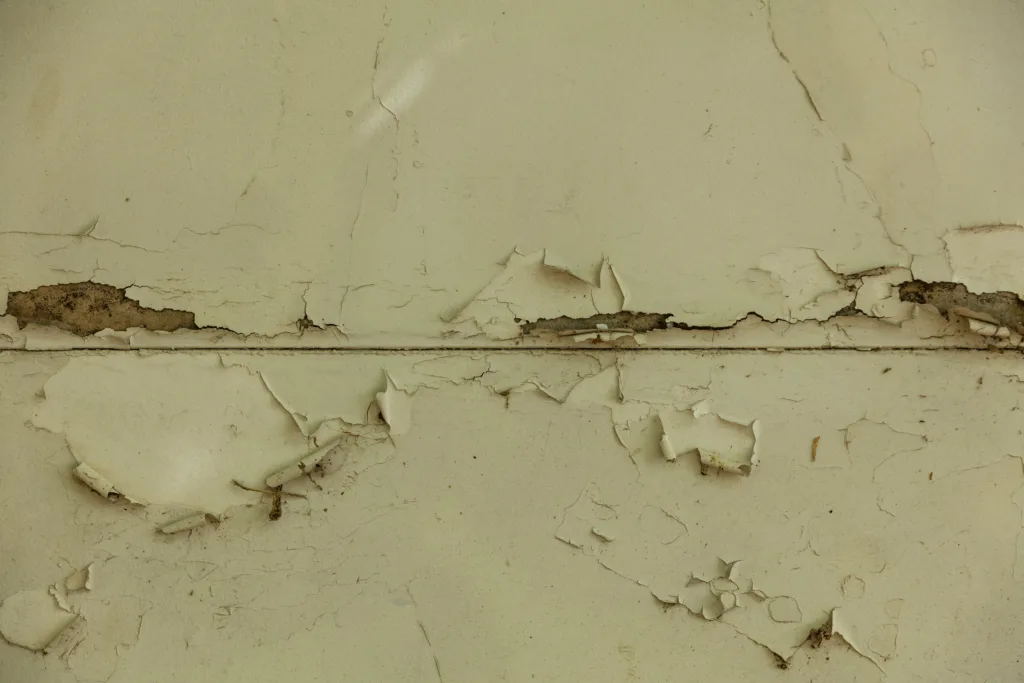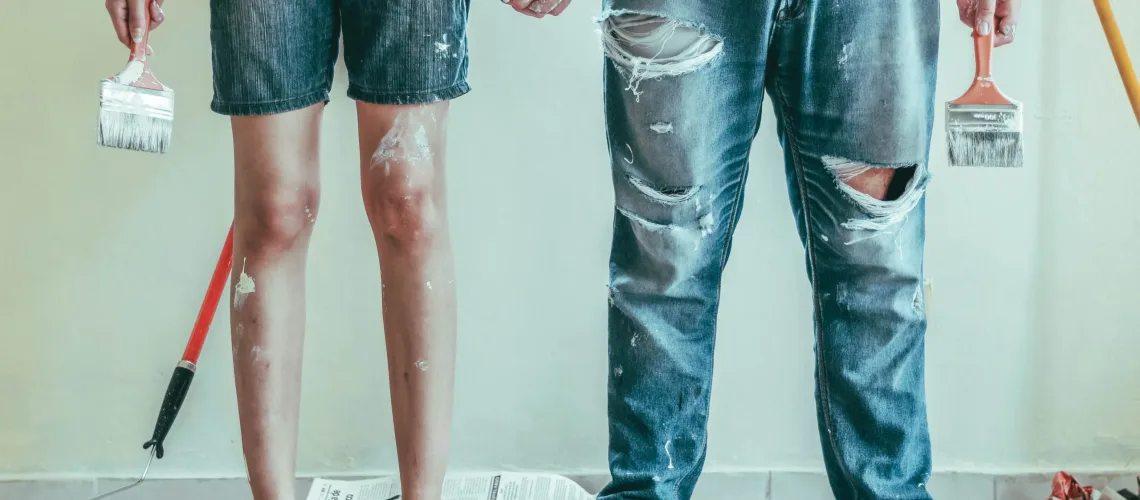When it comes to painting, especially in areas as focal as cabinets, achieving a smooth finish is the desired goal. However, a common issue many encounter is paint bubbling. Bubbling occurs when a layer of paint does not adhere perfectly to its underlying surface, known as the substrate.
| Painting Issue | Quick Explanation | Solution |
|---|---|---|
| Bubbles in Paint | Poor adhesion of paint to its substrate. | Properly prepare and clean the surface before painting. |
| Second Coat Bubbling | Localized loss of adhesion of paint. | Ensure the first coat has dried completely before adding a second. |
| Paint Peeling Off Cabinets | Caused by water damage, wear and tear, or a faulty original paint job. | Remove the damaged paint, repair any damages, and repaint. |
| Bubbling While Painting | Moisture trapped due to humidity or improper drying of the substrate. | Ensure proper surface preparation and optimal painting conditions. |
| Persisting Paint Bubbles | Bubbles that do not disappear after painting. | Manually remove bubbles and repaint the affected area. |
What Causes Bubbles When Painting Cabinets?
Painting cabinets can be a gratifying DIY project, giving your kitchen or bathroom a fresh look. However, nothing mars this experience quite like discovering bubbles on your freshly painted surface. Understanding the root cause can help prevent this from happening in future projects.
At the heart of the issue is the fact that, sometimes, a layer of paint does not adhere perfectly to its underlying surface, known as the substrate. This non-adherence can be due to:
- Surface Contamination: Dust, dirt, or grease can hinder proper paint adhesion.
- Moisture: Painting on a damp or wet surface can trap moisture, causing bubbles as it tries to escape.
- Incompatible Paints: Using different types of paint, or the wrong type of primer, can lead to poor adhesion.
Choosing the right tools can also make a significant difference. If you’re wondering about the ideal tools for the job, our guide on the best type of roller offers insights that can help.
How Do You Get Bubbles Out of Painted Cabinets?
After the initial disappointment of discovering bubbles on your freshly painted cabinets, the next step is fixing the issue. Here’s how you can remedy it:
- Remove the Damaged Paint: Begin by scraping off the bubbled paint using a paint scraper or putty knife. This helps to clear away the problem areas and create a smooth surface for the next steps.
- Prepare the Surface: Once the bubbled paint is removed, you’ll want to ensure that the surface is prepared adequately for the new coat of paint. This might mean sanding down any rough patches or applying a primer. Preparation is key to avoiding future issues. For those looking to paint without the hassle of sanding, our guide on how to paint cabinets without sanding can provide valuable insights.
- Repaint the Affected Area: With your surface prepped, you can proceed to repaint. Remember to follow the paint manufacturer’s instructions and ensure that each coat is dried adequately before applying another.
Why is My Second Coat of Paint Bubbling?
Experiencing bubbling during the second coat of paint can be particularly frustrating. This often happens when there’s a localized loss of adhesion of the paint to the underlying surface. Some reasons include:
- Not Allowing the First Coat to Dry Properly: It’s essential to allow enough drying time between coats. If the first layer hasn’t dried adequately, applying a second coat can trap solvents or moisture, leading to bubbles.
- Re-coating Too Quickly: Even if the first coat feels dry to the touch, it might not be cured enough to accept a second layer. It’s always a good idea to consult the paint can for recommended drying times.
- Inadequate Surface Preparation: If there were contaminants or residues on the surface before the first coat, these issues might only manifest during the second coating. Always ensure a thoroughly cleaned and primed surface before painting.

How to Fix Paint Peeling Off Cabinets
Peeling paint can be an eyesore, especially on cabinets that are central to a home’s aesthetic. It’s essential to address this issue promptly to prevent further damage and maintain your cabinets’ appearance. The most common reasons for paint peeling include water damage, wear and tear, or an improper original paint job. Here’s a step-by-step guide to address the problem:
- Identify the Cause: Before starting with any fixes, it’s crucial to understand the root cause. If there’s water damage, ensure that the source of the moisture is identified and rectified. Similarly, if the problem stems from an initial improper paint job, understanding the mistakes will help in preventing them in the future.
- Remove the Peeling Paint: Using a scraper or sandpaper, gently remove the peeling paint without damaging the underlying wood. For those unsure about this step, our blog on cabinet prep for painting offers useful tips.
- Clean and Prime the Surface: After scraping off the loose paint, clean the surface thoroughly. Use a mild detergent or a TSP substitute to get rid of any residues. Once cleaned, apply a suitable primer to ensure better paint adhesion.
- Repaint the Cabinets: With the surface prepped and primed, it’s time to repaint. Opt for high-quality paints designed for cabinets, such as those discussed in our best paint for kitchen cabinets guide.
Why is My Paint Bubbling While Painting?
It’s disheartening to see bubbles forming on your freshly painted surface. One of the primary culprits behind this is moisture. Moisture can become trapped during the painting process due to various reasons:
- High Humidity: Painting during times of high humidity can trap excess moisture between the paint and the surface, leading to bubbles.
- Improper Surface Preparation: If the surface was not cleaned properly or if there were residues left behind, they might react with the paint, causing it to bubble.
- Not Allowing the Substrate to Dry: If the substrate (or underlying surface) wasn’t adequately dried before paint application, the trapped moisture would attempt to escape, pushing against the paint layer and causing it to bubble or blister.
It’s crucial to understand that the quality of a paint job isn’t solely about the painting process but equally about the preparation. Properly prepping the surface can prevent many common paint problems.
Will Paint Bubbles Go Away?
It’s a common question many homeowners ask, hoping that those unsightly bubbles might disappear on their own. In most cases, small air bubbles might dissipate as the paint dries. However, larger bubbles resulting from trapped moisture or contaminants will remain. If, for some reason, the bubbles do not go away on their own, you will have to manually remove them. This involves scraping, prepping the surface, and repainting the affected area.
Remember, if the task seems too daunting, professional help is just a call away. For residents in Sacramento, San Francisco, and nearby regions, our team at Vintro Cabinets offers expert painting services to tackle these issues head-on.

